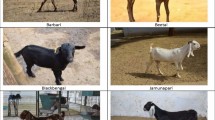Abstract
Automatic recognition of animal classes by their imageries is an imperative and perplexing task, especially with different animal breeds. Many image classification systems have been projected in the literature but they involve some disadvantages like accuracy deterioration or exhaustive confined calculation. This paper focuses on two methodologies: Transfer Learning and Convolutional Neural Network (CNN) for image-based species identification for distinct animal classes and categorized around twenty-eight thousand animal images from Google Images into ten diversified animal classes. For transfer learning, we have implemented VGG16 (Visual Geometry Group), Efficient NetB2, ResNet101 (Residual Network), Efficient NetB7, and Resnet50 networks that are pre-trained and equated the results of the 5 custom-built CNN networks with these networks using various evaluation metrics that can assist practitioners and research biologists in accurately recognizing various animal species. In terms of performance, VGG-16 attained a maximum accuracy of 0.99 and a Least Validation Cross Entropy Loss of 0.044 for the classification of different species of animals.
Access this chapter
Tax calculation will be finalised at checkout
Purchases are for personal use only
Similar content being viewed by others
References
Ahmeda, A., Yousifa, H., Kaysb, R., Hea, Z.: Semantic region of interest and species classification in the deep neural network feature domain. Ecological Inform. 52, 57–68 (2019)
Kong, B., Supancic, J., Ramanan, D., Fowlkes, C.C.: Cross-domain image matching with deep feature maps. Int. J. Comput. Visions 127, 1–13 (2019)
Alharbi, F., Alharbi, A., Kamioka, E.: Animal species classification using machine learning techniques. In: MATEC Web of Conferences, vol. 277, p. 02033, EDP Sciences (2019)
Rathor, S., Kumari, S., Singh, R., Gupta, P.: Two layers machine learning architecture for animal classification using hog and lbp. In: Goyal, V., Gupta, M., Trivedi, A., Kolhe, M.L. (eds.) Proceedings of international conference on communication and artificial intelligence. LNNS, vol. 192, pp. 445–453. Springer, Singapore (2021). https://doi.org/10.1007/978-981-33-6546-9_42
Lin, T.Y., RoyChowdhury, A. Maji, S.: Bilinear CNN models for fine-grained visual recognition. In: Proceedings of the IEEE International Conference on Computer Vision (ICCV), pp. 1449–1457 (2015)
Zhang, L., Yang, Y., Wang, M., Hong, R., Nie, L., Li, X.: Detecting densely distributed graph patterns for fine-grained image categorization. IEEE Trans. Image Process. 25(2), 553–565 (2016)
Chandra, S., et al.: Prolificacy assessment of spermatozoan via state-of-the-art deep learning frameworks. IEE Access 10 (2020)
Singh, V., Gourisaria, M.K., Harshvardhan GM, Singh, V.: Mycobacterium tuberculosis detection using CNN ranking approach. In: Gandhi, T.K., Konar, D., Sen, B., Sharma, K. (eds.) Advanced Computational Paradigms and Hybrid Intelligent Computing. AISC, vol. 1373. Springer, Singapore (2022). https://doi.org/10.1007/978-981-16-4369-9_56
Das, H., Naik, B., Naik, H.S., Jaiswal, S., Mahato, P., Rout, M.: Biomedical data analysis using a neuro-fuzzy model with post-feature reduction. J. King Saud Univ. Comput. Inform. Sci. 34 (2020)
Singh, V., et al.: Diagnosis of intracranial tumors via the selective CNN data modeling technique. Appl. Sci. 12, 2900 (2021)
Liang, Y., Li, Q., Chen, P., Xu, L., Li, J.: Comparative study of backpropagation artificial neural networks and logistic regression model in predicting poor prognosis after acute ischemic stroke. Open Med. 14(1), 324–330 (2019)
Norouzzadeh, M.S., et al.: Automatically identifying, counting, and describing wild animals in camera-trap images with deep learning. Proc. Natl. Acad. Sci. 115, E5716–E5725, USA (2018)
Willi, M., et al.: Identifying animal species in camera trap images using deep learning and citizen science. Methods Ecol. Evol. 10, 80–91 (2019)
Parham, J., Stewart, C.: Detecting plains and Grevy’s Zebras in the realworld. In: Proceedings of the 2016 IEEE Winter Applications of Computer Vision Workshops (WACVW). Lake Placid, NY, USA (2016)
Villa, A.G., Salazar, A., Vargas, F.: Towards automatic wild animal monitoring: identification of animal species in camera-trap images using very deep convolutional neural networks. Ecological Informat. 41, 24–32 (2017)
Hsu, D.: Using convolutional neural networks to classify dog breeds. CS23 1n Convolutional Neural Networks for Visual Recognition, vol. 2 (2015)
Liu, J., Kanazawa, A., Jacobs, D., Belhumeur, P.: Dog breed classification using part localization. In: Fitzgibbon, A., Lazebnik, S., Perona, P., Sato, Y., Schmid, C. (eds.) ECCV 2012. LNCS, vol. 7572, pp. 172–185. Springer, Heidelberg (2012). https://doi.org/10.1007/978-3-642-33718-5_13
Yu, X., Wang, J., Kays, R., Jansen, P.A., Wang, T., Huang, T.: Automated identification of animal species in camera trap images. EURASIP J. Image Video Process. 2013(1), 1 (2013). https://doi.org/10.1186/1687-5281-2013-52
Dutta, K., Chandra, S., Gourisaria, M.K.: Early-stage detection of liver disease through machine learning algorithms. In: Tiwari, S., Trivedi, M.C., Kolhe, M.L., Mishra, K., Singh, B.K. (eds.) Advances in Data and Information Sciences. LNNS, vol. 318. Springer, Singapore (2022). https://doi.org/10.1007/978-981-16-5689-7_14
Kuppili, V., et al.: Extreme learning machine framework for risk stratification of fatty liver disease using ultrasound tissue characterization. J. Med. Syst. 41(10), 1–20 (2017)
Singh, V., Gourisaria, M.K., Das, H.: Performance analysis of machine learning algorithms for prediction of liver disease. In: 2021 IEEE 4th International Conference on Computing, Power and Communication Technologies (GUCON), pp. 1–7 (2021)
Gourisaria, M.K., Jee, G., Harshvardhan, G.M., Singh, V., Singh, P.K., Workneh, T.C.: Data science appositeness in diabetes mellitus diagnosis for healthcare systems of developing nations. IET Commun. (2022)
Muneeswaran, V., Pallikonda Rajasekaran, M.: Gallbladder shape estimation using tree-seed optimization tuned radial basis function network for assessment of acute cholecystitis. In: Bhateja, V., Coello, C.A., Coello, S.C., Satapathy, P.K. (eds.) Intelligent engineering informatics. AISC, vol. 695, pp. 229–239. Springer, Singapore (2018). https://doi.org/10.1007/978-981-10-7566-7_24
Alessio, C.: Animals-10 dataset from https://www.kaggle.com/datasets/alessiocorrado99/animals10/code. 15th May 2021
Author information
Authors and Affiliations
Corresponding author
Editor information
Editors and Affiliations
Rights and permissions
Copyright information
© 2022 The Author(s), under exclusive license to Springer Nature Switzerland AG
About this paper
Cite this paper
Gourisaria, M.K., Singh, U., Singh, V., Sharma, A. (2022). Performance Enhancement of Animal Species Classification Using Deep Learning. In: Panda, S.K., Rout, R.R., Sadam, R.C., Rayanoothala, B.V.S., Li, KC., Buyya, R. (eds) Computing, Communication and Learning. CoCoLe 2022. Communications in Computer and Information Science, vol 1729. Springer, Cham. https://doi.org/10.1007/978-3-031-21750-0_18
Download citation
DOI: https://doi.org/10.1007/978-3-031-21750-0_18
Published:
Publisher Name: Springer, Cham
Print ISBN: 978-3-031-21749-4
Online ISBN: 978-3-031-21750-0
eBook Packages: Computer ScienceComputer Science (R0)




